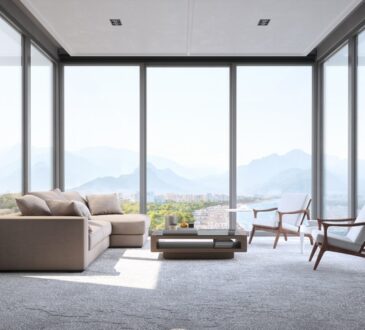
The design of a workspace is no longer a mere afterthought in the business world. Instead, it has evolved into a strategic tool that plays a pivotal role in fostering a productive and motivating environment.
A well-designed office can have a significant impact on employee morale, engagement, and overall productivity. Here, we will explore the multifaceted ways in which commercial interior designers contribute to boosting workplace productivity.
The Power of Productivity
Productivity is a cornerstone of any successful business. It directly affects an organisation’s bottom line, employee satisfaction, and its ability to innovate and compete in the market.
A productive workplace leads to:
- Efficiency: Tasks are completed more quickly and with fewer errors.
- Higher Quality: Work is done to a higher standard.
- Innovation: A productive environment encourages creativity and innovative thinking.
- Employee Satisfaction: A more productive workplace often results in happier employees who feel they are accomplishing their goals.
- Improved Health: Reduced stress and a healthier work environment are often byproducts of increased productivity.
The Role of Commercial Interior Designers
Commercial interior designers are experts at creating spaces that maximise functionality, aesthetics, and well-being. Their expertise extends to:
- Layout Optimization: Designers create layouts that promote efficiency, collaboration, and minimal distractions.
- Ergonomic Design: They consider ergonomics to ensure that workspaces are comfortable and supportive, reducing physical strain.
- Aesthetically Pleasing Environments: The aesthetics of a workspace have a profound impact on employee mood and motivation, influencing overall productivity.
- Functional Spaces: Designers focus on creating spaces that serve specific purposes, enhancing their effectiveness.
- Technology Integration: Modern technology is seamlessly incorporated into their designs, streamlining communication and work processes.
- Noise and Distraction Control: Designers implement acoustic solutions and spatial designs that reduce distractions and enhance focus.
- Cultural Alignment: Elements of design can reflect a company’s culture, fostering a sense of belonging and motivation among employees.
- Flexibility and Adaptability: Spaces are designed to be adaptable, making it easier for employees to adjust to changing needs and stay productive.
- Lighting and Ventilation: Proper lighting and ventilation contribute to overall comfort and a more productive workspace.
- Green Design Practices: Sustainable and environmentally friendly design elements contribute to a healthier and more productive environment.
Ergonomics and Employee Well-being
Ergonomics, the science of designing the workplace to fit the employee, is a critical aspect of commercial interior design. It encompasses factors such as desk height, chair design, and the arrangement of the workspace to minimise physical strain and discomfort.
Ergonomic considerations include:
- Adjustable Furniture: Furniture that can be customised to each employee’s needs.
- Keyboard and Monitor Placement: Ensuring that these are at the right height and angle to prevent strain.
- Break Areas: Providing comfortable spaces where employees can take breaks and stretch to reduce stress and fatigue.
- Wellness Rooms: Designing rooms that offer a space for relaxation or meditation, promoting mental well-being.
Collaborative Workspaces
Effective collaboration is essential for many businesses. Commercial interior designers create spaces that encourage teamwork and idea sharing:
- Open Layouts: Open offices foster interaction and spontaneous collaboration among employees.
- Meeting Spaces: Well-designed meeting rooms with appropriate technology make discussions more productive.
- Collaboration Zones: These areas are strategically placed to encourage impromptu brainstorming and discussions.
- Communication Tools: Incorporation of technology that enables easy communication and sharing of ideas.
Employee Well-being
Employee well-being is inextricably linked to productivity. Commercial interior designers recognise this and create environments that promote physical and mental health:
- Natural Light: Designers maximise natural light to reduce eye strain and create a more pleasant atmosphere.
- Comfortable Temperature: Proper climate control ensures a comfortable working environment.
- Noise Control: Acoustic design solutions reduce distractions and promote focus.
- Green Spaces: The inclusion of indoor plants and green walls can improve air quality and reduce stress.
- Ergonomic Furniture: The use of ergonomic chairs and adjustable desks fosters comfort and well-being.
Cultural Alignment and Employee Engagement
The physical environment of a workplace can strongly influence company culture and employee engagement:
· Branding and Identity
Commercial interior designers incorporate branding elements and company values into the workspace design, creating a consistent and memorable brand image.
· Employee Involvement
Employee involvement is vital for workplace success. It fosters a sense of ownership, encourages creative problem-solving, and boosts morale. Engage employees through open communication, empowerment, and collaboration in decision-making.
This active involvement can enhance productivity, job satisfaction, and overall organisational performance, creating a more committed and motivated workforce.
· Retention and Attraction
Retention and attraction are crucial for organisations. To retain employees, and provide growth opportunities, a positive work environment, and competitive benefits.
To attract top talent, offer appealing compensation, a strong company culture, and a reputation for innovation and inclusivity, creating a dynamic, thriving workforce.
· Community Building
Community building is essential for fostering connections and shared experiences. It involves creating spaces and events that encourage interaction and collaboration among individuals.
This sense of belonging and unity can improve social well-being, enhance support networks, and cultivate a more inclusive and resilient community, creating a positive and vibrant environment.
· Diversity and Inclusion
Inclusive design choices, such as accessible workstations and meeting spaces, accommodate a wide range of employees, creating a more welcoming and equitable atmosphere.
Technology and Office Design (h2)
The integration of technology into office design is fundamental to modern business operations:
- Connectivity: Commercial interior designers ensure seamless connectivity with reliable Wi-Fi and tech infrastructure.
- Smart Offices: Smart features like automated climate control and occupancy sensors enhance convenience and energy efficiency.
- Audiovisual Systems: Audiovisual systems are integrated for presentations, meetings, and collaboration, facilitating communication.
- Collaboration Tools: Tools like digital whiteboards, project management software, and communication platforms are integrated for efficient teamwork and information sharing.
Sustainable Office Design
Sustainability is no longer a niche concern but a central theme in commercial interior design:
- Energy Efficiency: Energy-efficient lighting, heating, and cooling systems reduce consumption and operating costs.
- Eco-Friendly Materials: The use of sustainable materials, such as recycled or reclaimed resources, contributes to environmentally responsible design.
- Waste Reduction: Waste reduction strategies, such as recycling stations and minimal paper usage, create an organised and sustainable workspace.
- Indoor Air Quality: Proper ventilation and low-VOC paints and finishes enhance indoor air quality, promoting a healthier work environment.
Case Studies: Offices that Excel in Design
To illustrate the profound impact of office design, let’s look at two case studies:
· Googleplex, Mountain View, California
Google’s headquarters is an iconic example of innovative office design. It features flexible workspaces, open lounges, creative nooks, and recreational areas, fostering creativity, collaboration, and a strong sense of community among employees.
· Airbnb, San Francisco, California
Airbnb’s office reflects its core mission of connecting people through unique travel experiences. The design, inspired by actual Airbnb listings worldwide, evokes a sense of travel, adventure, and cultural diversity.
Creating a Productive Office Design Strategy
To harness the potential of commercial interior design, consider these steps:
- Needs Assessment: Understand your organisation’s unique requirements by conducting a needs assessment. Consider workforce size, work types, and employee preferences.
- Space Planning: Determine the optimal use of available space, incorporating open layouts, private offices, and communal areas as needed.
- Design Elements: Choose design elements that align with your brand identity and culture, such as colour schemes, furnishings, and artwork.
- Furniture Selection: Invest in ergonomic and versatile furniture to support different workstyles, including adjustable desks and comfortable seating.
- Technology Integration: Ensure that technology is seamlessly integrated into the office, with reliable Wi-Fi, audiovisual equipment, and collaboration tools.
- Environmental Responsibility: Prioritise sustainability with energy-efficient systems and eco-friendly materials, along with waste reduction and improved indoor air quality.
- Flexibility and Adaptability: Design spaces that can adapt to changing needs, featuring reconfigurable furniture and modular elements.
- Employee Engagement: Involve employees in the design process to gather insights into their needs and preferences, fostering a sense of ownership in the workspace.
Conclusion
The design of an office is a powerful tool in shaping a productive, engaging, and motivating work environment.
Commercial interior designers play a critical role in creating spaces that optimise functionality, aesthetics, and well-being. Thus, it is essential to hire the best professionals such as the office interior designer in Hyderabad.
A well-designed workspace reflects your brand identity, influences office culture, and significantly impacts employee productivity.
In a competitive business landscape, investing in commercial interior design is an investment in your organisation’s future, boosting morale, efficiency, and innovation.




